THE CHRONICLES OF NARNIA Explained: C.S. Lewis and Religion
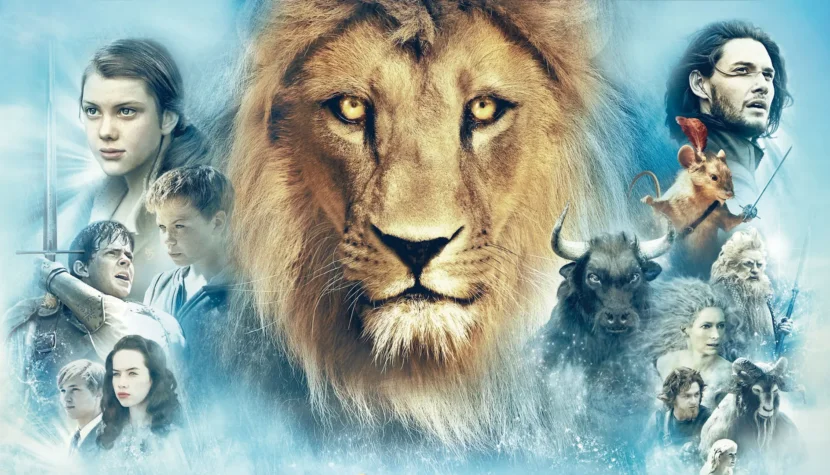
Thus, Aslan does not help Peter when the boy is forced to defeat an attacker. Defending himself against the wolf becomes Peter’s initiation, his entrance into the real world, where one must sometimes make choices that go against oneself. Similarly, we do not see any hesitation in the Lion’s actions when he takes the life of the White Witch. He is the sole judge; we do not question the morality of the act, as its righteousness cannot be debated, knowing Lewis’s view on the matter. The film illustrates this perspective very well.
The most magnificent and at the same time the most important moment of the film, which extraordinarily portrays the virtue that Lewis considered the most difficult—humility—is the moment of Aslan’s self-sacrifice. This is a literal translation of Christ’s sacrifice, transferred into the world of fantasy. The humility and dignity with which the Lion walks among his enemies is all the more striking because here walks a king—strong, free, who could easily defend himself, attack, and crush his opponent. Yet, he does not do this, for he understands the meaning of the word “sacrifice.”
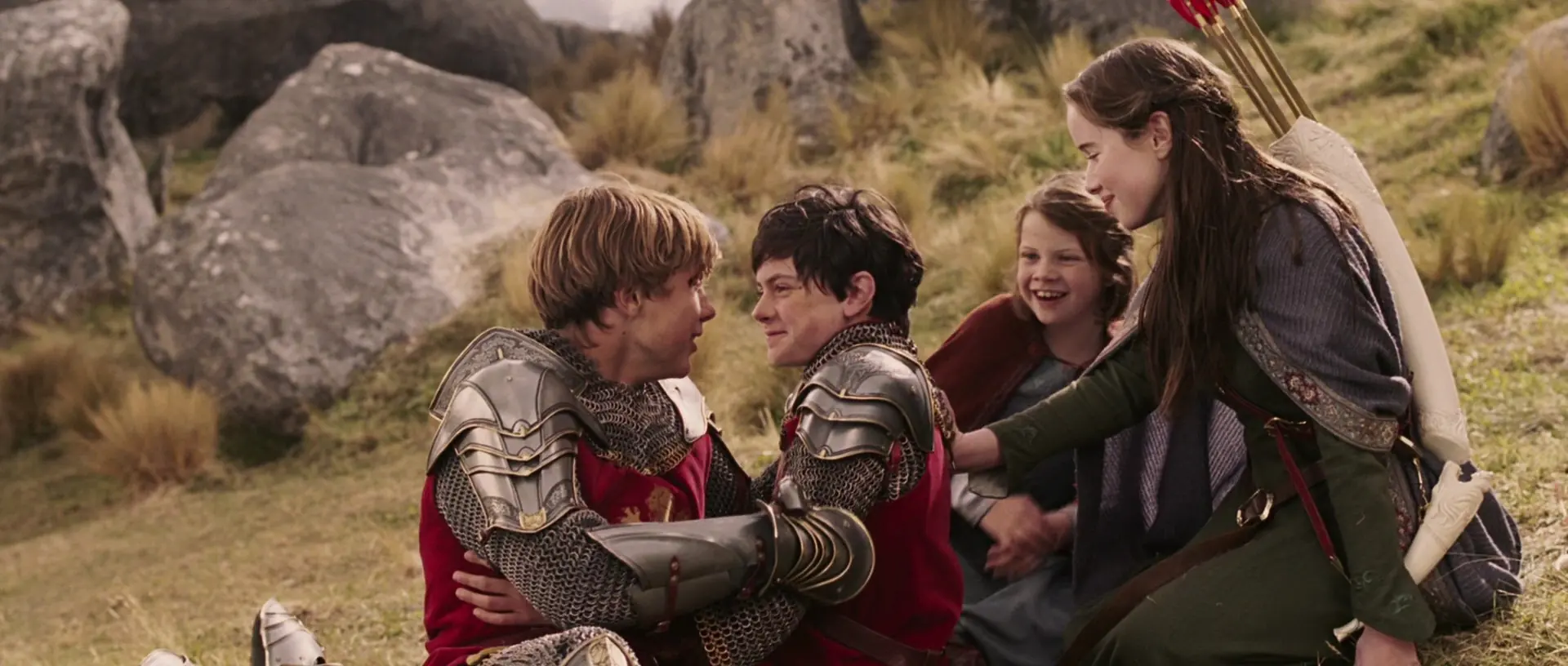
Christ experienced perfect submission and humiliation: perfect because He was God, submission and humiliation because He was man.
Lewis attributes Aslan with characteristics that speak to his power, majesty, and strength, while at the same time allowing the Lion to submit, be humiliated, bound, and killed. The White Witch takes from him what she believes constitutes his dignity and strength. As he lies at her feet, he is but a silent kitten, unable to strike back. At this moment, the Witch’s evil is fully exposed; she is so blinded that she does not grasp the meaning of what is happening. She is merely a small part of a larger puzzle, a puzzle she cannot even see. She truly believes that her moment of triumph has arrived, and at this point, the viewer loses any last shred of respect they might have had for her, even if only because she seemed to be a person of class. Unfortunately, at the moment the sacrifice is fulfilled, she stands before us as a woman who sheds all pretenses; even her external beauty becomes an irrelevant attribute. The fact that she is so repulsive does not stem from her inherent evil, but from the fact that, looking through Aslan’s eyes, we can fully see her evil, as it can only be seen when we know the fullness of goodness and sacrifice. Additionally, the disgust for her deepens not only because of the contrast between her stance and that of the creature making the ultimate sacrifice but also because she is a woman. This may not sound feminist, but it is easier to forgive a man for such a fall, and when all sins of this nature are enclosed in such a delicate body and in beauty that appears so pure and innocent, it evokes even stronger repulsion. I suspect, though I may be mistaken, that Lewis would have been proud of this sequence. It contains everything he wrote about evil and humility; at this moment, we are watching an illustration of what he so persistently explained. Of course, this is overlaid with something central to Christian religion,
at the heart of the Christian faith, we find the conviction that Christ’s death somehow reconciled us with God and allowed us to start anew.
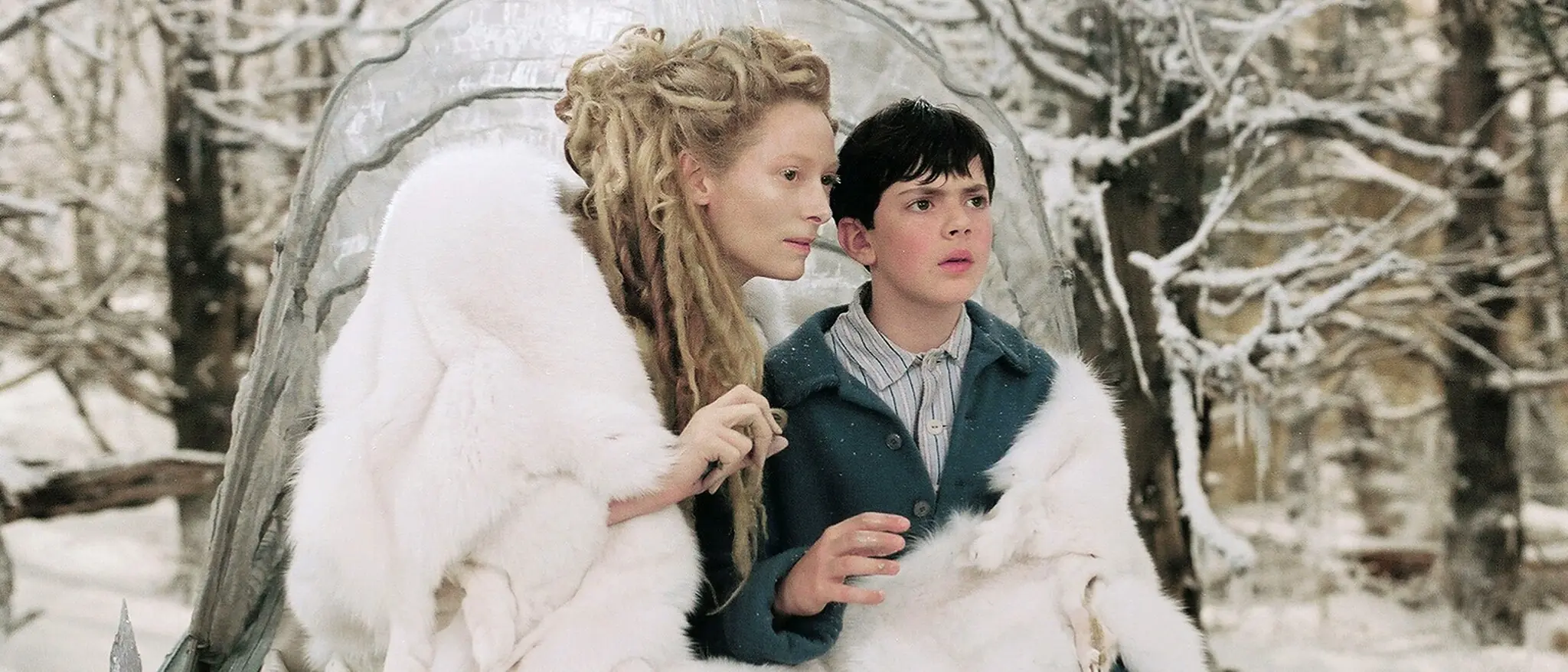
Jesus died for every person, for a specific individual, yet how much easier it is to understand when illustrated with an example. Lewis here refers to the most literal representation of this problem. There is no “everyone,” only a specific individual. For Aslan dies wanting to save the life of a traitor, whose blood the White Witch demands.
In The Lion, the Witch and the Wardrobe, Aslan dies only for the boy Edmund. Similarly, Christ’s passion should be related to each person individually. It would be wrong to think that the extraordinary sufferings and torments had to balance out the number of sinners in need of salvation. Christ’s passion would have looked exactly the same even if He had to suffer for only one sinner.
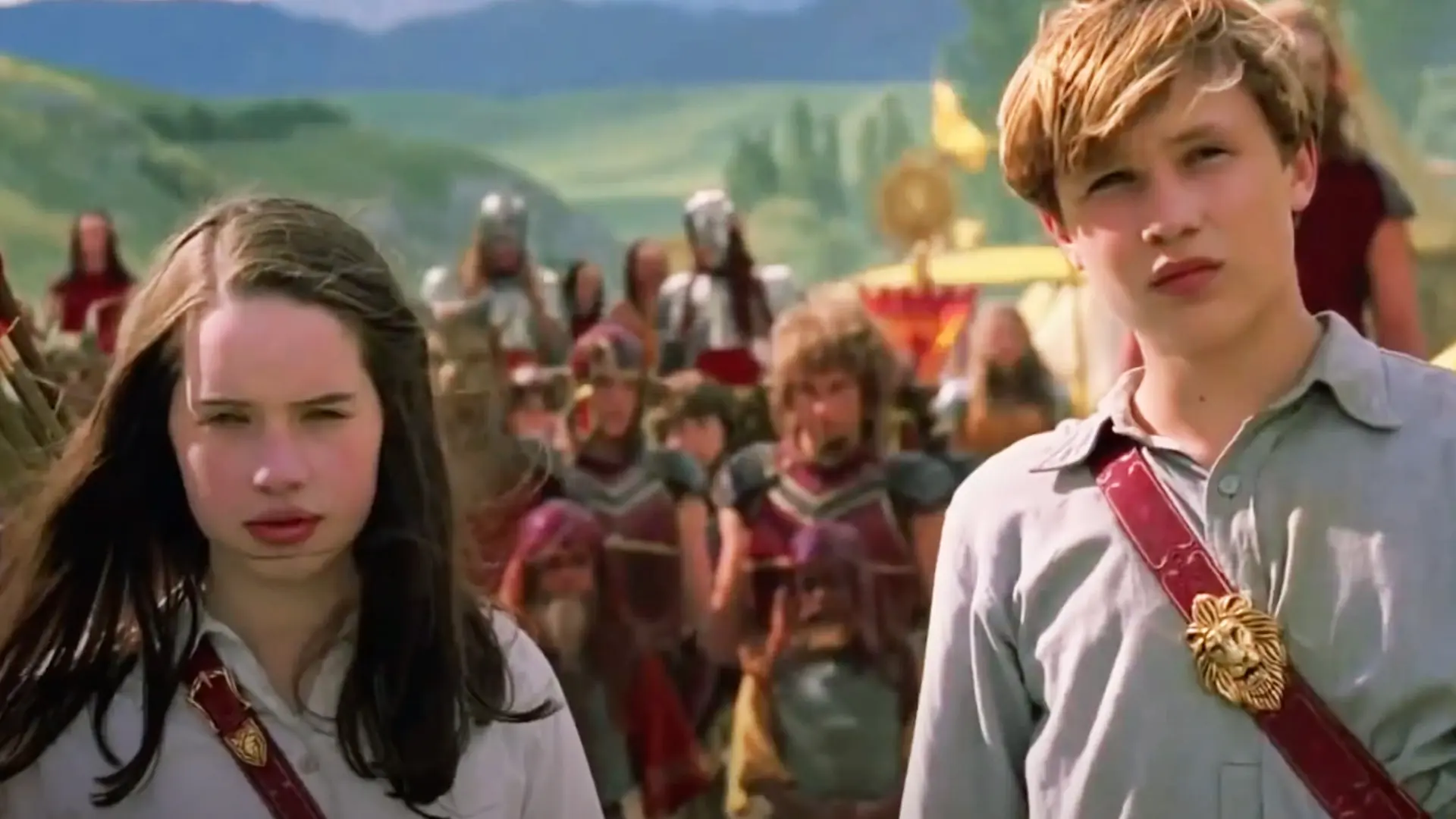
The boy is not aware of what the Lion is doing for him, for Aslan does not seek gratitude. In exchange for the enchanted treat, the Witch expected Edmund to bring his siblings to her. She did not know that it was not so much her spell that worked, but rather the fact that the boy’s decisions were determined by his conflict with his brother. Aslan, giving his life for him, expects nothing in return. The betrayal is forgiven, the consequence is sacrifice (the Lion sacrifices his life because the self-proclaimed Queen of Narnia invokes the law stating that the blood of the traitor belongs to her, while the forgiveness occurs before the sacrifice. It probably would not have happened if Edmund had not shown remorse and recognized his mistake); he can only hope that the boy will prove himself worthy of it. Thus, the choice Edmund makes is not insignificant. The line between good and evil is clear, but let’s not naively believe that the division is so easy. If we recall biblical references, Edmund acts similarly to Judas. His betrayal does not only concern Aslan, whom he does not yet know; he only has a vague idea of the Lion’s strength and is aware of what awaits those expecting his arrival. He betrays his closest ones, tempted by his favorite treat, the opportunity to show his brother that he is stronger than him, and the vision of seizing power. He wants to take shortcuts, reaching for what he has not earned.
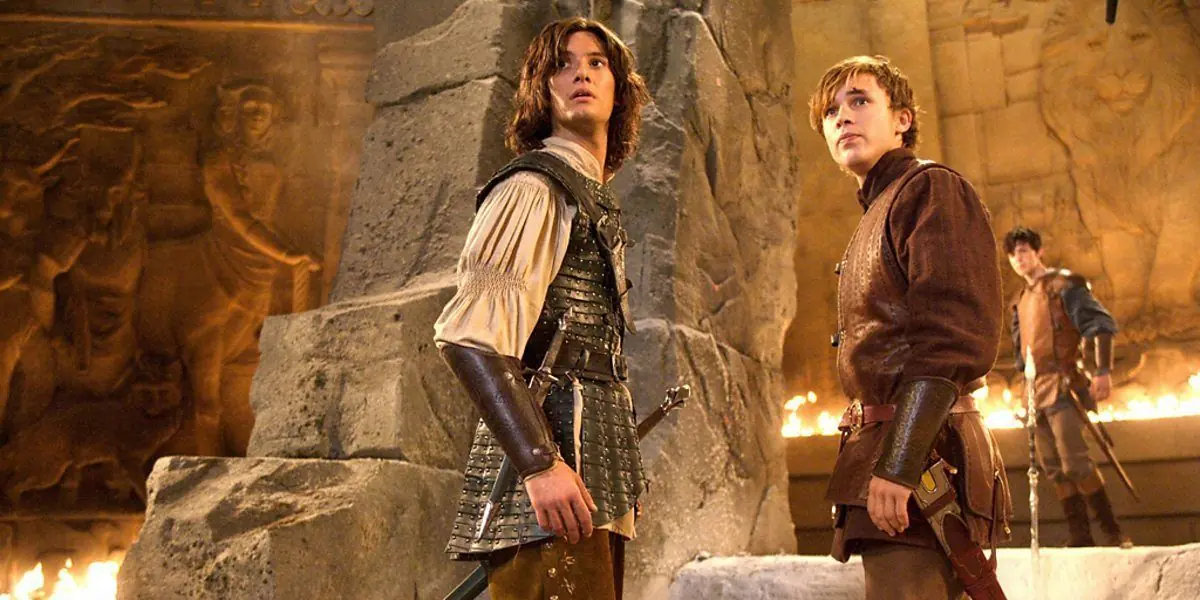
The world of Narnia does not close in on an artificial division between black and white, especially through the character of Edmund, as well as Tumnus the faun. However, there are no compromises in this realm either; they must atone for having betrayed (even if not fully consciously), or having planned a betrayal. The White Witch, on the other hand, agrees to a compromise, blinded by her pride and power hunger, for how tempting is the possibility of taking the life of someone more powerful than her. Unfortunately, in the final reckoning, there is no middle ground. Edmund saves his soul, Tumnus is restored to life and summoned by Aslan to stand by his side. This is a difficult and terrifying vision, showing that mistakes can be made, even frequently, and they can be as base as betrayal. You can make them, but if you don’t turn away from them in time, the judge will have no mercy in the final reckoning, which is emphatically illustrated in the symbolic and visual battle between Evil and Good.

…it will be God without disguise—something so overwhelming that it will produce either irresistible love or irresistible terror in every creature. Then, it will be too late to choose sides. It will be no good saying you choose to lie down when it has become impossible to stand up.
Lewis will fully develop this truth in another part of The Chronicles of Narnia, but here we see an illustration introducing the concept of the end of the world and the choice that must be made before it comes. In the book, much more strongly than in the film, the element of fear that the Lion evokes is emphasized.
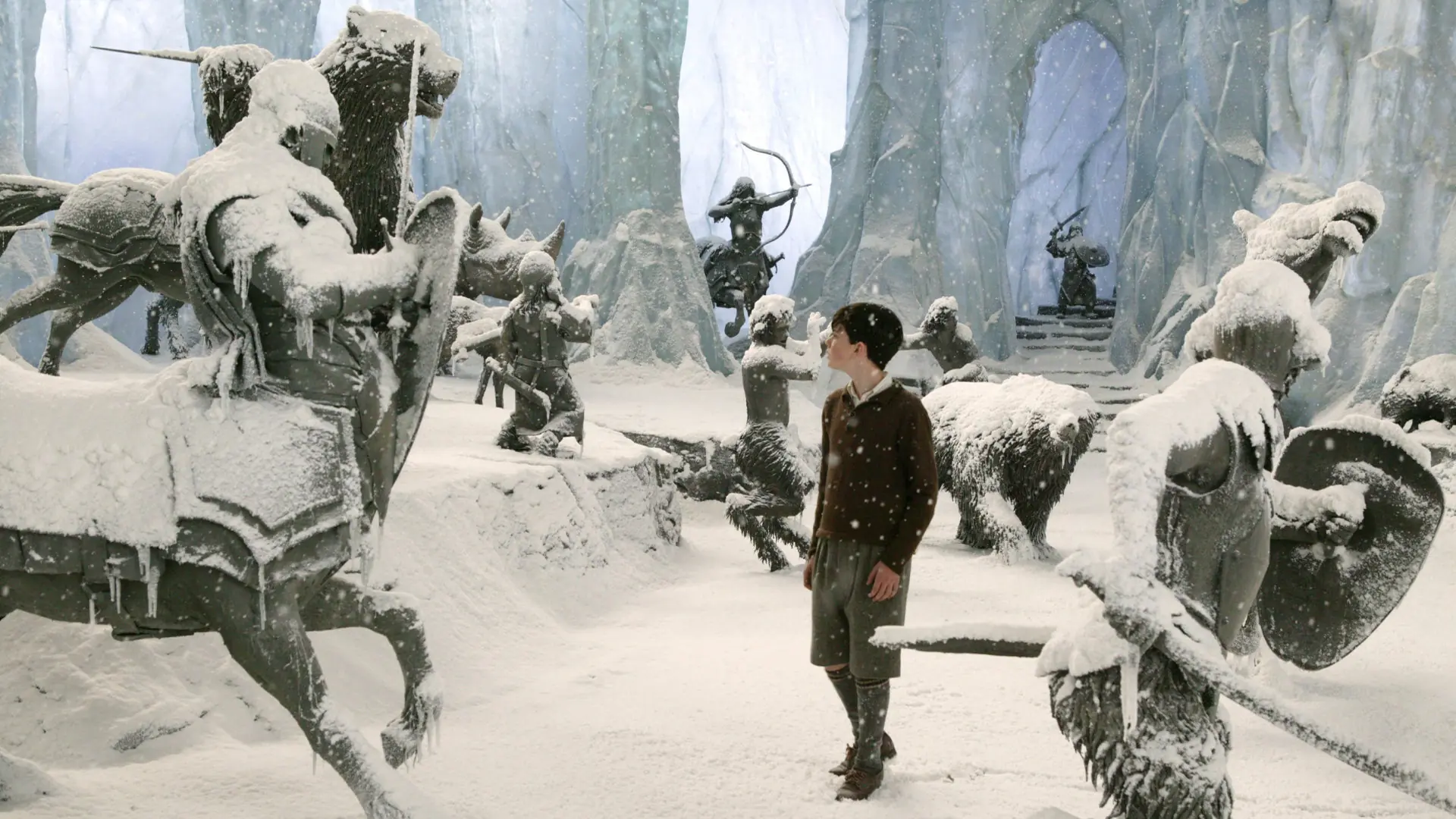
Just as it is a terrifying thing to fall into the hands of the living God, so too is it frightening to meet Aslan. One does not fear as much as one’s knees tremble. People who met Christ during His earthly life felt either aversion, fear, or reverence. Opposing the overly sentimental understanding of Christianity, Lewis emphasizes here the experience of fear. But the Beavers quickly add that Aslan is good, and because He is good, He loves.
I did not intend, of course, to venture into the territory of comparing literature and film, but this one element seems to me to be extremely important. In Adamson’s film, Aslan is also not a Tame Lion, which is emphasized in the finale of the story; it is revealed when with a single roar he instills fear in his opponents… yet he is not entirely in line with the idea of God (or God, Christ, and the Holy Spirit, as this Trinitarian formula is embodied in this character) as Lewis presents Him. In some way, the fear of encountering Aslan is replaced by the anticipation of this meeting, joy, and curiosity. The enemies, however, are too limited by their pride for the Lion to first evoke hatred, and even if that hatred is a consequence of fear, they are not aware of it. The White Witch, until her very end, does not feel dread. Of course, as in Lewis’s story, Aslan here is uncompromising. Just like Christ going to his passion, he feels loneliness and is grateful that Lucy and Susan want to accompany him because he too needs someone’s closeness to comfort him, but when each person has made their decision, he returns, no longer a meek kitten but a judge…
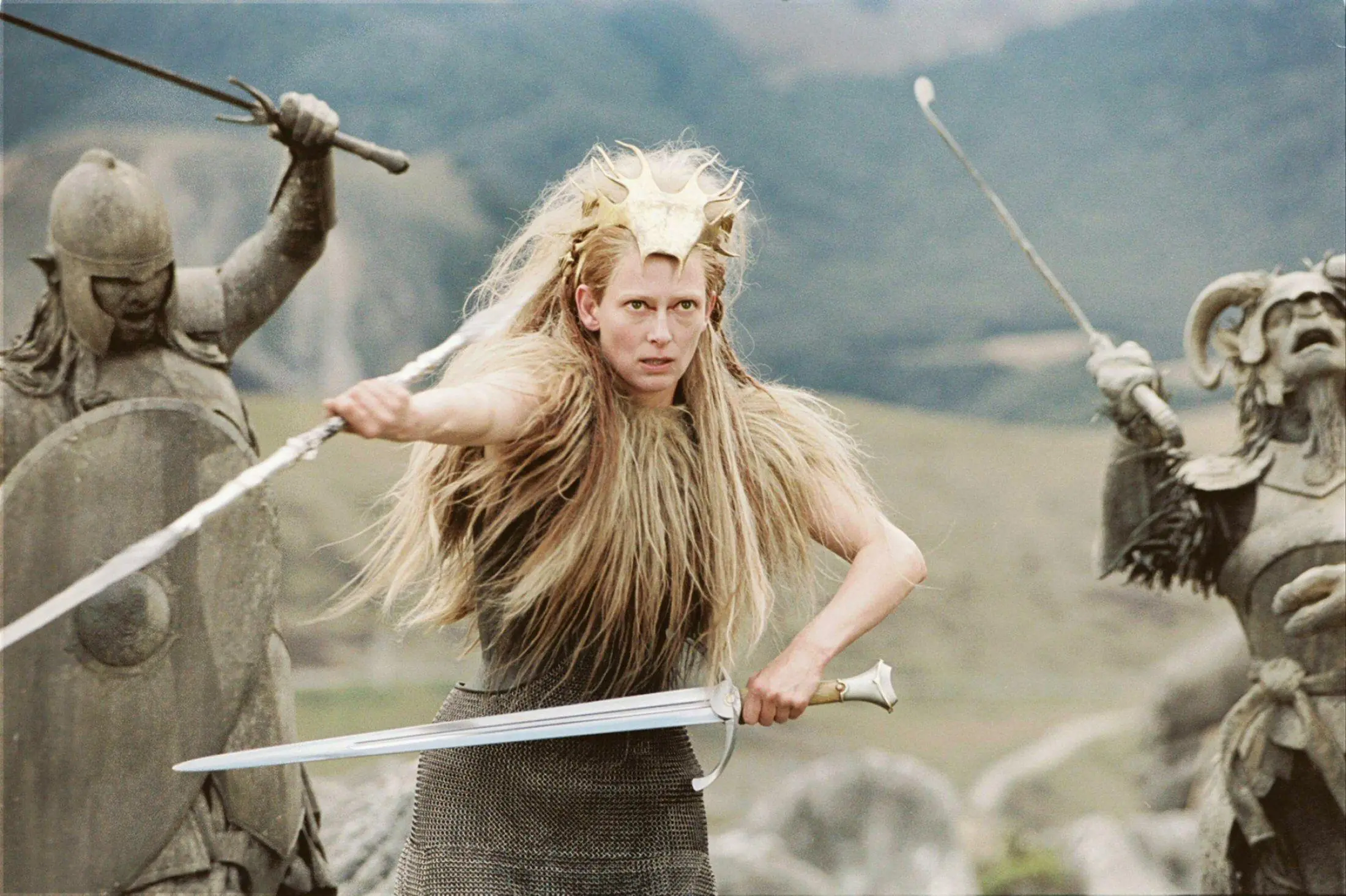
Of course, there are many more illustrations depicting Lewis’s faith and beliefs, which are detailed and can be explored through the extensive literature about the author, his works, or by reading The Chronicles of Narnia themselves. Here, I have only proposed a small fragment, which should make it clear that when evaluating and interpreting his work, one must not overlook its most important element—its religious references. This should also be remembered when discussing Adamson’s film, which successfully captures the essence and message that Lewis intended. The film avoids becoming trivial, not focusing solely on spectacular battle scenes, but offering more than just beautiful visuals and excellent acting by Tilda Swinton. It’s not another film like Harry Potter, providing mere entertainment, but largely remaining at that level. Naturally, it’s hard to compare it with The Lord of the Rings, though perhaps that’s due to the style in which Tolkien wrote compared to Lewis. The Chronicles of Narnia cannot quite compete with what Tolkien created, although Tolkien was surely a significant inspiration for his friend. However, the comparisons are not what matter here, but rather how Lewis’s deeply ideological novel was handled. Adamson has certainly emerged from this challenge victorious. Let that serve as a conclusion, and I recommend exploring at least this small part of the literature on which the above text is based.
Written by Iwona Kusion

